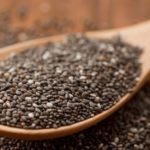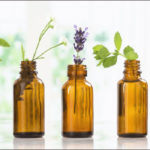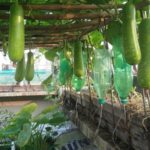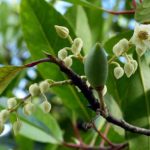Mushrooms are incredibly versatile and widely used in daily life thanks to their amazing health benefits. Today, let’s explore the wonderful world of mushrooms and uncover their benefits and selection tips.
1 Basic Information about Mushrooms
 Basic Information about Mushrooms
Basic Information about Mushrooms
Mushrooms, or Fungi/Fungus in scientific terms, are heterotrophic organisms with a chitinous cell structure. They respire by inhaling oxygen and exhaling carbon dioxide, much like humans and green plants. The English name for this fungus is “Mushroom.”
Currently, there are approximately 70,000 known mushroom species worldwide. Mushrooms typically consist of parts such as gills, caps, lamellae, stipes, stems (stalks), basal cups, and mycelium.
Mushrooms provide the body with essential nutrients, including proteins, vitamins, minerals, and antioxidants. They are also rich in fiber, unsaturated fatty acids, and essential amino acids such as lysine, tryptophan, and arginine.
2 Benefits of Edible Mushrooms
Enoki Mushrooms for Heart Health
 Enoki Mushrooms for Heart Health
Enoki Mushrooms for Heart Health
Enoki mushrooms are beneficial due to their very low saturated fat content. This makes them an excellent choice for promoting heart health.
Oyster Mushrooms for Goiter Treatment
 Oyster Mushrooms for Goiter Treatment
Oyster Mushrooms for Goiter Treatment
According to Eastern medicine, oyster mushrooms have a sweet taste and warm properties. They are believed to slow down aging, prevent goiter, reduce stress, and lower the risk of heart disease. Additionally, the protein content in oyster mushrooms is highly beneficial for cancer patients.
Shiitake Mushrooms for Lowering Cholesterol
 Shiitake Mushrooms for Lowering Cholesterol
Shiitake Mushrooms for Lowering Cholesterol
Shiitake mushrooms are packed with nutrients such as unsaturated fatty acids, fiber, vitamins B, D, and niacin. These compounds have been proven to reduce cholesterol levels in the blood.
Porcini Mushrooms for Lowering Blood Pressure
 Porcini Mushrooms for Lowering Blood Pressure
Porcini Mushrooms for Lowering Blood Pressure
Porcini mushrooms contain significant amounts of potassium, protein, fiber, polysaccharides, and vitamins such as B, D, and PP, which help lower blood sugar levels.
Straw Mushrooms for Weight Loss
 Straw Mushrooms for Weight Loss
Straw Mushrooms for Weight Loss
The high content of unsaturated fatty acids and micronutrients such as iron, calcium, phosphorus, and vitamins B2, C, D, and PP, especially fiber, make straw mushrooms an effective weight-loss aid.
Further Reading:
3 How to Identify Poisonous Mushrooms
Common Poisonous Mushroom Species in Vietnam
According to the website www.vfa.gov.vn of the Food Safety Authority of the Ministry of Health, the following are the most common poisonous mushroom species in Vietnam:
Destroying Angel (Amanita Verna)
 Destroying Angel
Destroying Angel
The Destroying Angel usually grows in clusters or individually on the ground. Its cap is white, smooth, and egg-shaped when young, growing to a height of 5-10 cm when mature, and eventually curling inward.
The gills are white, and the stem is white with a membranous ring near the cap. The base of the stem is bulbous and enclosed in a volva, resembling a flower. The flesh is soft, fragrant, and highly toxic due to amatoxins.
Fool’s Mushroom (Amanita virosa)
 Fool’s Mushroom
Fool’s Mushroom
The Fool’s Mushroom closely resembles the Destroying Angel. Its cap is white and shiny, egg-shaped when young, and enclosed around the stem. When mature, the cap is 4-10 cm in diameter. The flesh is soft, white, and has an unpleasant odor, with the primary toxins being amanitin (amatoxin).
Fibrecap (Inocybe fastigiata or Inocybe rimosa)
 Fibrecap
Fibrecap
The Fibrecap usually grows on decaying tree trunks in forests. Its cap is round or bell-shaped, with yellow or brown fibers radiating from the center to the edge. As the mushroom ages, the cap splits into individual rays, with a diameter of 2-8 cm.
Green-Gilled Parasol (Chlorophyllum molybdites)
 Green-Gilled Parasol
Green-Gilled Parasol
The Green-Gilled Parasol often grows in clusters or individually near cattle or buffalo pens or on lawns. Its cap is hemispherical, pale yellow, and covered with brown or grayish-white scales. When mature, the cap is flat and white, with a diameter of 5-15 cm.
The gills are white, turning pale green or grayish-green when old, with a ring near the cap. The stem does not swell into a bulb and has no volva, typically measuring 10-30 cm long. The flesh is white, with low toxicity, mainly causing digestive disorders.
How to Distinguish Poisonous Mushrooms
 How to Distinguish Poisonous Mushrooms
How to Distinguish Poisonous Mushrooms
Poisonous mushrooms typically have all the parts, including the cap, gills, stem, ring, and basal cup.
If the inside of the stem is pale pink, the cap is red, there are white scales, and the mushroom fibers glow in the dark, it is poisonous.
Mushroom toxicity can vary depending on the season, environment, soil, and climate.
Further Reading:
4 Frequently Asked Questions about Mushrooms
Can I Eat Mushrooms Every Day?
 Can I Eat Mushrooms Every Day?
Can I Eat Mushrooms Every Day?
Mushrooms are a low-calorie food packed with vitamins and minerals, making them ideal for daily inclusion in weight-loss diets.
How to Choose Delicious Mushrooms
 How to Choose Delicious Mushrooms
How to Choose Delicious Mushrooms
To select fresh and tasty mushrooms, look for those with bright colors, free from bruises and with a distinctive aroma. Avoid mushrooms with dark spots and wrinkles; instead, opt for those with a thin veil covering the cap.
Further Reading:
Which Mushrooms Are Suitable for Hot Pot?
 Which Mushrooms Are Suitable for Hot Pot?
Which Mushrooms Are Suitable for Hot Pot?
In Vietnamese and many other Eastern cuisines, mushrooms are a key ingredient in delicious hot pots. Some of the best mushrooms for hot pots include oyster, straw, shiitake, enoki, and wood ear mushrooms.
Additionally, various other mushroom species can be used in different hot pot dishes, such as Jade mushrooms, abalone mushrooms, termite mushrooms, king oysters, lion’s mane, chicken of the woods, and golden needle mushrooms.
Further Reading:
What Should Be Noted When Processing and Preserving Mushrooms?
Processing Notes
Overwashing Mushrooms
 Overwashing Mushrooms
Overwashing Mushrooms
Mushrooms grow in clean environments, so overwashing can remove their nutrients and cause them to absorb too much water, resulting in bland-tasting dishes. Instead, rinse them briefly or not at all if purchased from a reputable source. Simply trim the stems and wipe them with a damp cloth or clean brush.
Washing Mushrooms in an Aluminum Pot
 Washing Mushrooms in an Aluminum Pot
Washing Mushrooms in an Aluminum Pot
Using an aluminum pot to wash mushrooms will cause them to discolor and become unappetizing. Therefore, it is best to avoid using aluminum when handling mushrooms.
Cooking Mushrooms with Too Much Oil
 Cooking Mushrooms with Too Much Oil
Cooking Mushrooms with Too Much Oil
Mushrooms absorb liquids and oils readily, so using excessive oil will make them greasy and difficult to digest.
Cooking Mushrooms at Too Low a Temperature
Exploring the Benefits of Chia Seeds on Good Health: What You Need to Know
Did you know that chia seeds come from the same family as herbs that are used in spices such as mint and basil? These seeds are a popular health food due to their unique health benefits. Read on to find out how these seeds can be used and why they're so beneficial!







































